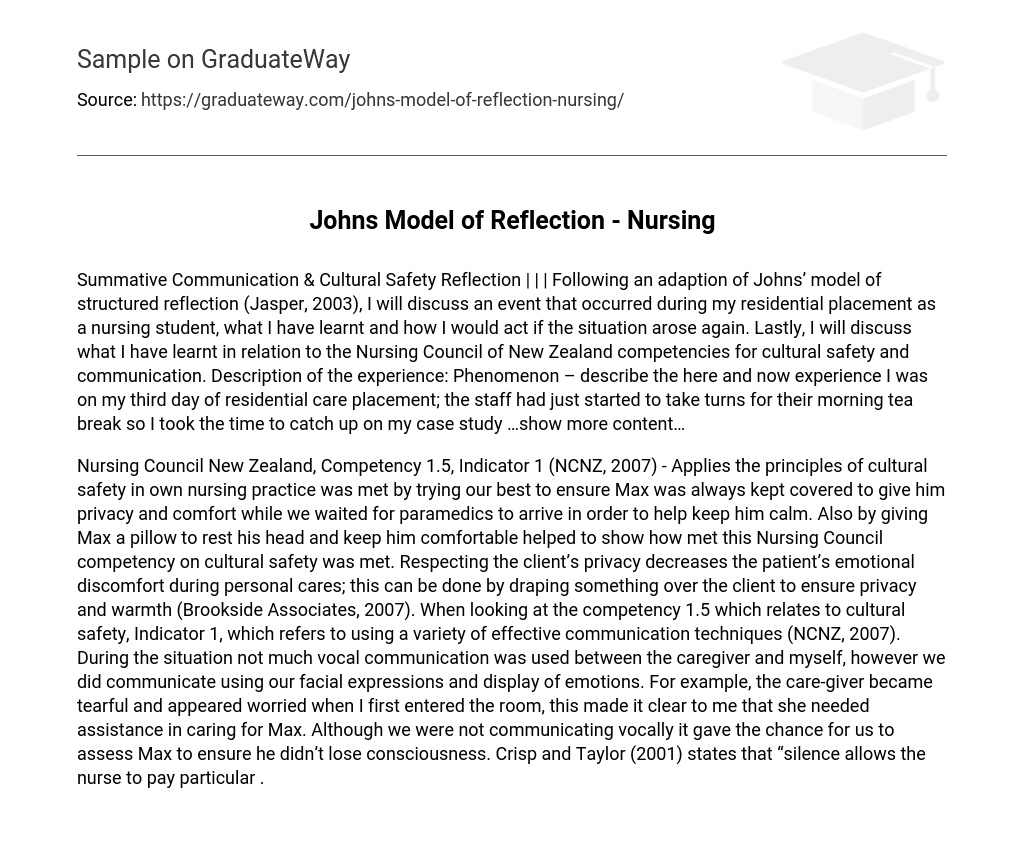Following an adaption of Johns’ model of structured reflection (Jasper, 2003), I will discuss an event that occurred during my residential placement as a nursing student, what I have learnt and how I would act if the situation arose again. Lastly, I will discuss what I have learnt in relation to the Nursing Council of New Zealand competencies for cultural safety and communication. Description of the experience: Phenomenon – describe the here and now experience I was on my third day of residential care placement; the staff had just started to take turns for their morning tea break so I took the time to catch up on my case study.
Nursing Council New Zealand, Competency 1.5, Indicator 1 (NCNZ, 2007) – Applies the principles of cultural safety in own nursing practice was met by trying our best to ensure Max was always kept covered to give him privacy and comfort while we waited for paramedics to arrive in order to help keep him calm.
Also by giving Max a pillow to rest his head and keep him comfortable helped to show how met this Nursing Council competency on cultural safety was met. Respecting the client’s privacy decreases the patient’s emotional discomfort during personal cares; this can be done by draping something over the client to ensure privacy and warmth (Brookside Associates, 2007). When looking at the competency 1.5 which relates to cultural safety, Indicator 1, which refers to using a variety of effective communication techniques (NCNZ, 2007).
During the situation not much vocal communication was used between the caregiver and myself, however we did communicate using our facial expressions and display of emotions. For example, the care-giver became tearful and appeared worried when I first entered the room, this made it clear to me that she needed assistance in caring for Max. Although we were not communicating vocally it gave the chance for us to assess Max to ensure he didn’t lose consciousness. Crisp and Taylor (2001) states that “silence allows the nurse to pay particular.





